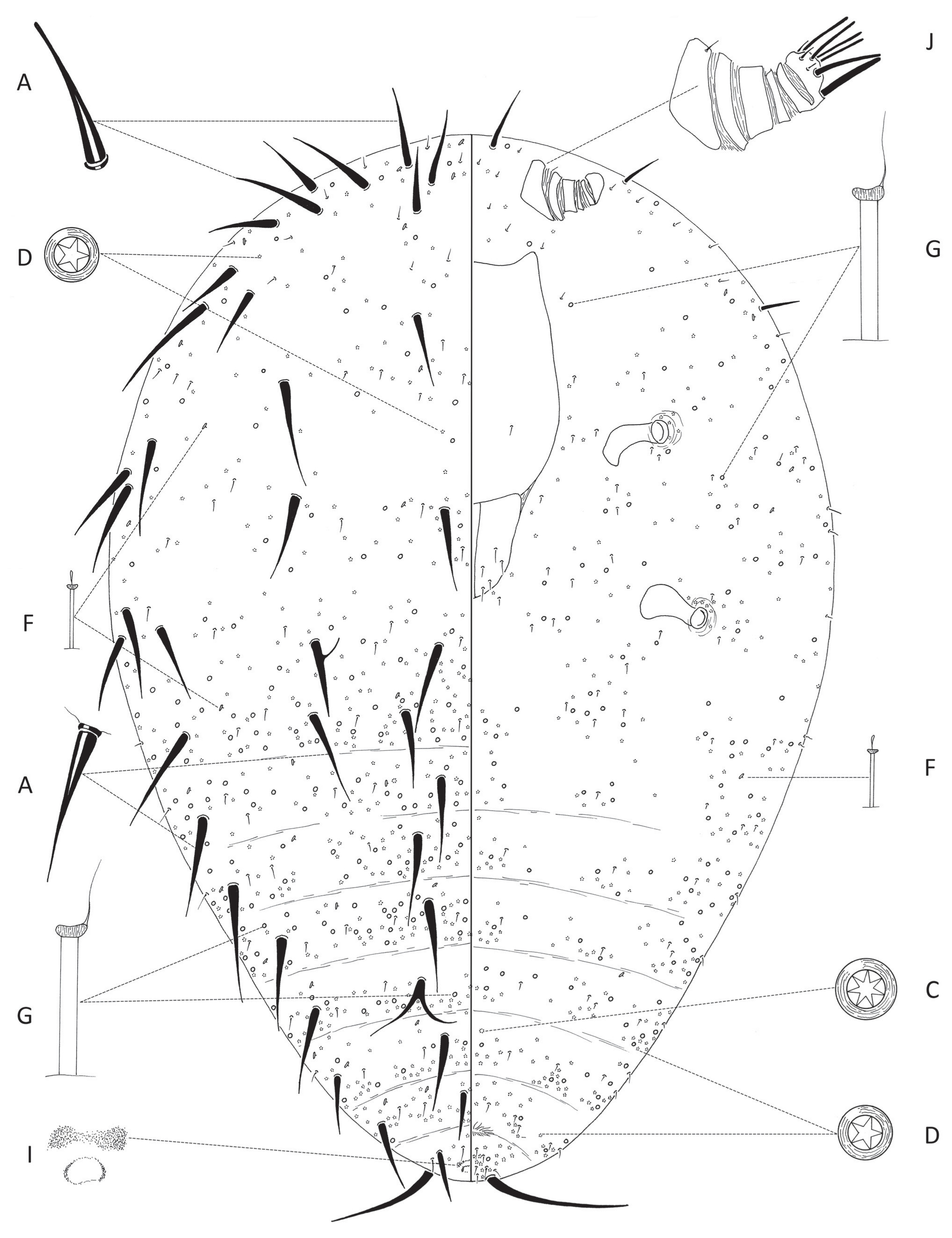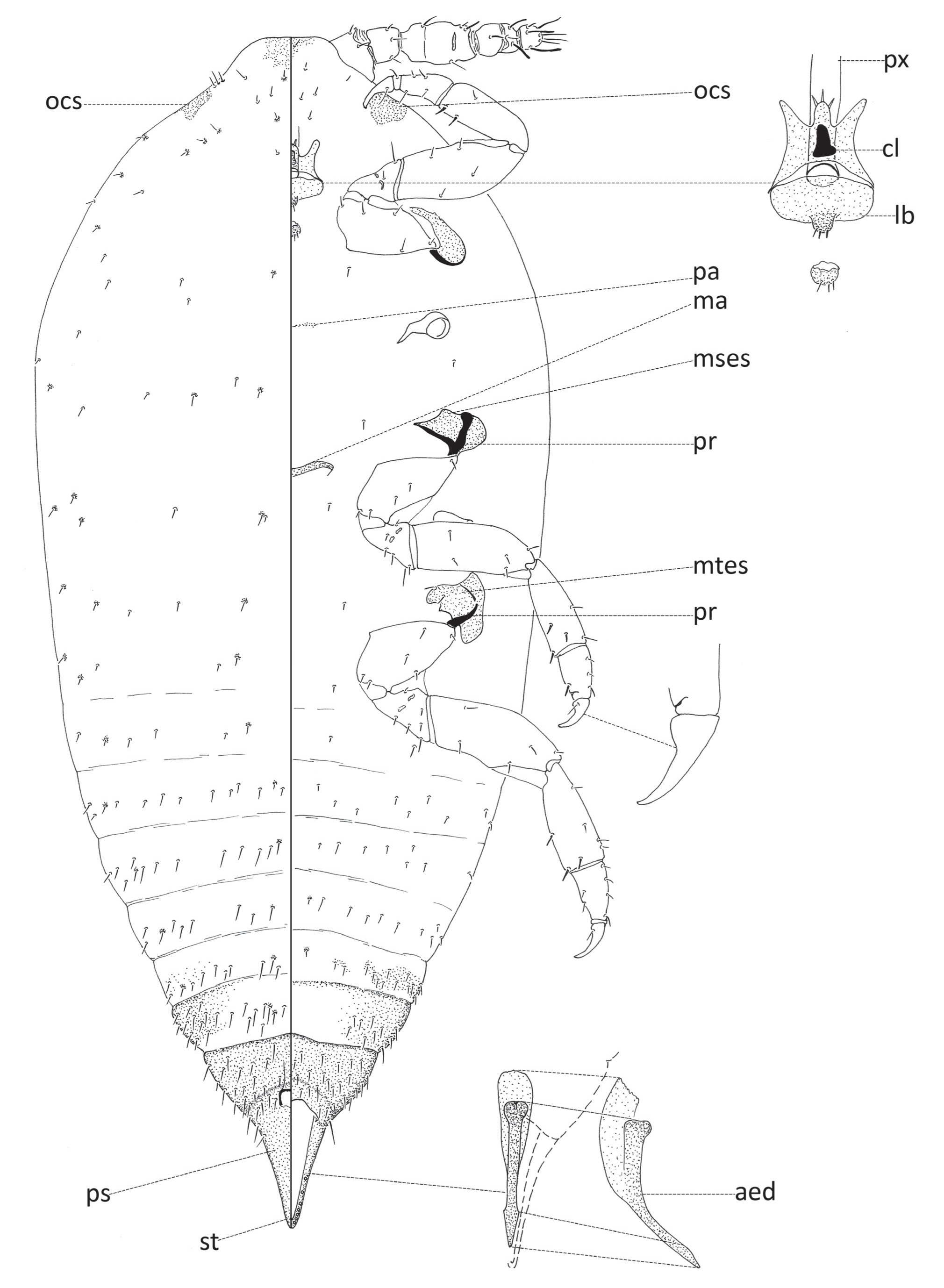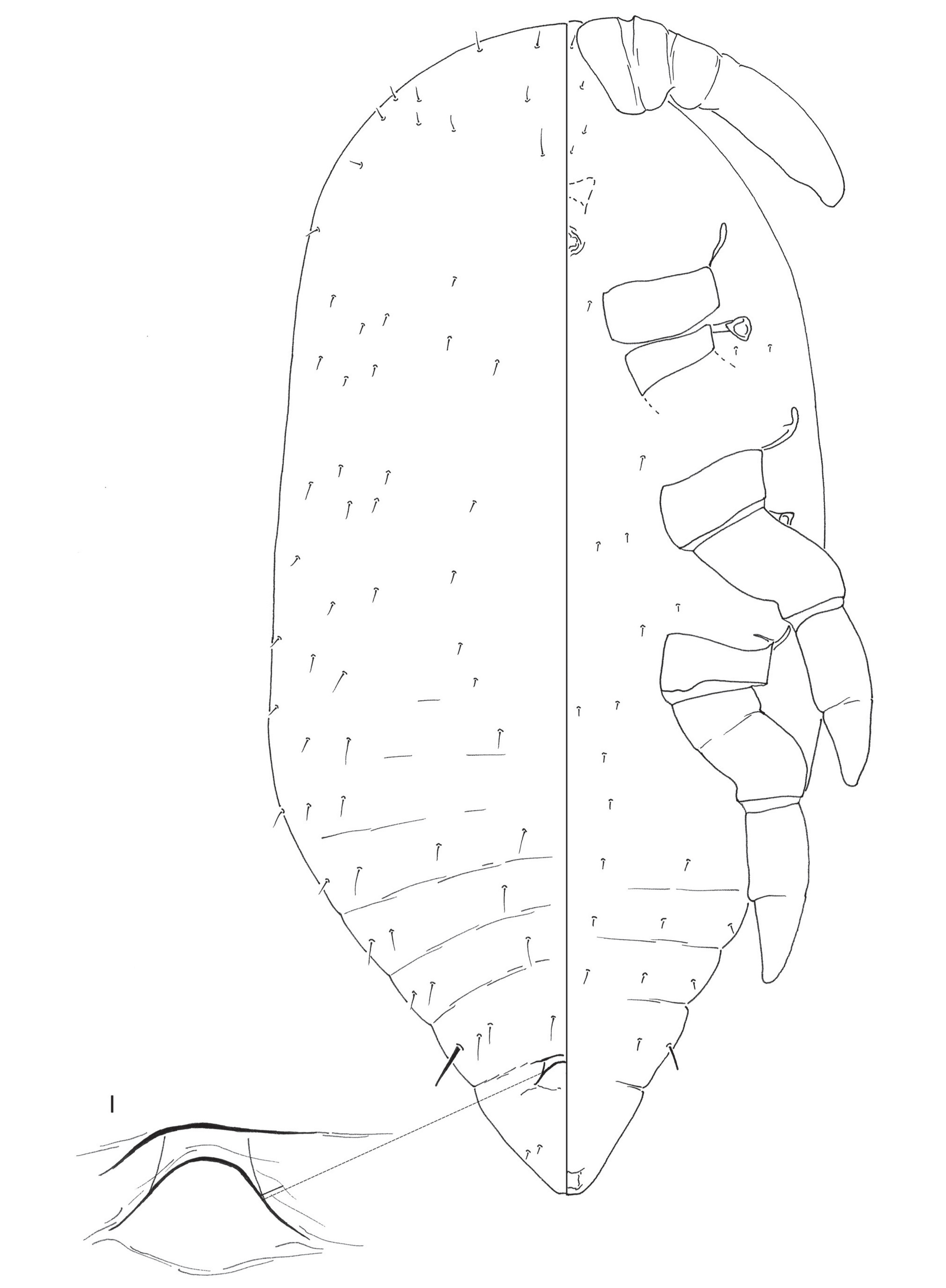Valid Names Results
Carpochloroides eugeniae Miller & Stocks, 2022 (Eriococcidae: Carpochloroides)Nomenclatural History
- Carpochloroides eugeniae Miller & Stocks 2022: 48. Type data: MEXICO: Oaxaca, Chivela, on Eugenia acapulcensis in eriococcid gall, 1926, by G.F. Ferris. Holotype, female, by original designation Type depository: Davis: The Bohart Museum of Entomology, University of California, California, USA; accepted valid name Notes: Paratypes: MEXICO: Oaxaca: Chivela, II-(?)- 1925, on Eugenia acapulcensis, G.F. Ferris (1 ad. ♀ holotype, 45 ad. ♀♀ paratypes, 65 second-instar ♀♀ paratypes, 9 ad. ♂♂ paratypes, 2 second-instar ♂♂ paratypes, 1 second-instar ♂ molting to third-instar prepupa paratype, 50 first-instar nymph paratypes, 47 first-instar nymph shed-skin paratypes, UCD (8 slides), USNM (10 slides).
Common Names
Ecological Associates
Hosts:
Families: 1 | Genera: 1
- Myrtaceae
- Eugenia acapulcensis | MillerSt2022
Associates:
Families: 1 | Genera: 1
- Eriococcidae
- Carpochloroides mexicanus | MillerSt2022
Geographic Distribution
Countries: 1
- Mexico
- Oaxaca | MillerSt2022
Keys
Remarks
- Systematics: Ferris (1957) described the species, Carpo. mexicanus, which induces galls even though the type species (Carpo. viridis) from Brazil was not found in a gall. Based on morphology, there is reasonable evidence to place both species in the same genus.There were two morphologically distinct adult females present in these galls. Miller & Stocks (2022) treated the two different types of adult female as specimens of two different species, i.e., Carpo. mexicanus and Carpo. eugeniae. The adult female of Carpo. eugeniae is most similar to the adult female of Carpo. mexicanus but differs as follows (character states in brackets are those of the female of Carpo. eugeniae): with short dorsal flagellate setae only (with enlarged setae and short flagellate setae); with small macrotubular ducts but without microtubular ducts (with microtubular and macrotubular ducts); with unsegmented antennae (with 5- or 6-segmented antennae); with large apodemes attached to the clypeus (without large apodemes); and without a plate anterior to the anal opening (with a plate). (Miller & Stocks, 2022)
- Structure: Holotype adult female, slide mounted, 0.8 mm long, 0.6 mm wide (paratypes 0.6–1.2 mm long, 0.4–0.8 mm wide). Body pyriform, without protruding anal lobes. Anal-lobe area dorsally with 2 setae, 1 long and robust, 1 short and thin, and 1 5-locular pore; ventrally with 2 or 3 flagellate setae including elongate anal-lobe seta, and 1 or 2 5-locular pores. (Miller & Stocks, 2022)
- Biology: Galls are formed in small branches at the points where the leaf petioles are attached. Galls vary from 1 to 2 cm in diameter and are nearly spherical in shape. The inner cavity is also spherical and varies from 5‒9 mm in diameter. Two species occur in these galls and although Carpo. eugeniae is the most abundant, adult females of Carpo. mexicanus have been found in the same galls. Different galls, though synchronized internally, can be in quite different life stages compared to other galls. The inner cavity of the gall is lined with a white waxy secretion and the cavity is often filled with small balls of felted wax. If Carpo. eugeniae and Carpo. mexicanus are different species, it is likely that Carpo. eugeniae is the species that induces the gall, not Carpo. mexicanus as suggested by Ferris (1957). (Miller & Stocks, 2022)
- General Remarks: Detailed descriptions and illustrations of the adult female, second-instar female, adult male, immature males and first-instar nymphs in Miller & Stocks, 2022.
Illustrations
Citations
- MillerSt2022: biology, description, distribution, host, illustration, nymph, 48-59









